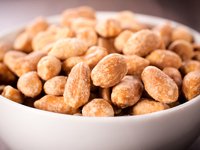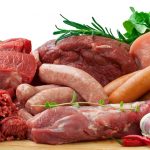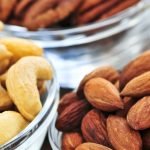When you are trying to cut back on calories and not eat so many snacks, it would seem logical to do everything possible to take your focus off of them. Not buying them of course will help, but even avoiding the food commercials and pictures in magazines or cookbooks will make it easier, right? After all, out of sight, out of mind. But now, new research has found that the opposite might hold true: when you look at a photograph of a food numerous times, it begins to quash your desire for that type of food.
The study, which was conducted at the Brigham Young University Marriott School of Management in Provo, Utah, discovered that viewing lots of pictures of a food may make you sick enough of that food to diminish its appeal and make eating it less enjoyable.1 Castillo, Michelle. “Instagram this: Looking at food pictures may make real food less tasty.” CBS News. 8 October 2013. Accessed 13 October 2013. http://www.cbsnews.com/8301-204_162-57606570/instagram-this-looking-at-food-pictures-may-make-real-food-less-tasty The subjects were 232 men and women who were recruited to look at photos of foods and rate each one according to how tasty they appeared to them. They were randomly divided into two groups. One group studied 60 pictures of sugary confections including chocolate, cake, and truffles, while the second group pondered 60 pictures of salty-tasting snacks such as French fries, pretzels, and potato chips.
After viewing and rating each photo, all of the participants were provided with salty peanuts to munch on. Once these were consumed, the researchers asked the volunteers to rate the peanuts on the same scale of desirability. Those who had spent their time checking out pictures of salty foods rated the peanuts as considerably less delicious than did their peers who had looked at sweet foods. Interestingly, the salty group of images did not include any photos of peanuts per se, but it would appear that the subjects’ taste for anything reminiscent of salty flavor had decreased.
Before you go putting up pictures of your favorite fattening snack foods all over your kitchen to promote natural weight loss, understand that a quick glance at an item didn’t seem to have much of an effect. It was only through the repeated viewing of foods in that particular taste category that the appetite was somewhat sated. So the average person searching the computer for a good recipe and looking at food photos would probably remain unaffected unless the search was fairly extensive. And we don’t know whether this would extend to finding all kinds of foods less desirable after seeing too much of them, or if it only pertains to those foods that satisfy a certain craving, such as salty or sweet.
Unfortunately, according to earlier research, it would appear that many of our preferences for these types of cravings may be hard-wired before we are even born. A 2007 study at Royal Veterinary College in London, England discovered that a mother’s diet during pregnancy and while breastfeeding may have long-lasting effects on her child’s taste for food.2 Bayol, Stephanie A.; et al. “A maternal ‘junk food’ diet in pregnancy and lactation promotes an exacerbated taste for ‘junk food’ and a greater propensity for obesity in rat offspring.” British Journal of Nutrition. October 2007. Accessed 14 October 2013. http://journals.cambridge.org/action/displayAbstract?fromPage=online&aid=1343304&fulltextType=RA&fileId=S0007114507812037 In other words, those moms-to-be who eat a ton of junk food are much more likely to have a child who craves the same kinds of sweets or salty munchies in which she indulged.
Whether it’s mom’s fault or not, though, looking at images of foods may not be the most practical way to keep our appetites in check. After all, who wants to spend their time rifling through dozens of food photos before every meal? But it might come in handy in certain instances, such as those times you know you are more likely to overindulge. Before a party, sporting event, or dinner out–any situation that frequently leads to you eat too much–you might want to run through images on your computer of the types of foods that typically trip up your healthy eating habits. For a little investment of your time, trying this strategy might be well worth the calories saved.
Then again, now that this research is out, how long do you think it will be before there’s an app for your phone that will allow you a rapid fire view of dozens of pictures of any food group you want to avoid at the click of an icon. Since I just thought of it, this is my chance to strike it rich. I’m trademarking the name, “Angry Food.™” #J/K)
References
| ↑1 | Castillo, Michelle. “Instagram this: Looking at food pictures may make real food less tasty.” CBS News. 8 October 2013. Accessed 13 October 2013. http://www.cbsnews.com/8301-204_162-57606570/instagram-this-looking-at-food-pictures-may-make-real-food-less-tasty |
|---|---|
| ↑2 | Bayol, Stephanie A.; et al. “A maternal ‘junk food’ diet in pregnancy and lactation promotes an exacerbated taste for ‘junk food’ and a greater propensity for obesity in rat offspring.” British Journal of Nutrition. October 2007. Accessed 14 October 2013. http://journals.cambridge.org/action/displayAbstract?fromPage=online&aid=1343304&fulltextType=RA&fileId=S0007114507812037 |











